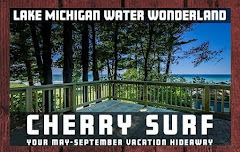In the afternoon the windsurfers sailed Hookipa and there was still a healthy size as this photo from this gallery by Jimmie Hepp shows.

Since it's all over the social media, most of you guys will probably know already that there was a shark attack at the point at Hookipa yesterday around 5pm. The victim suffered lacerations at his forearm/hand and leg, the first one being the worse. He happens to be a friend of mine, so I'd like to send him my best wishes for a prompt and full recovery.
As a surf/SUP/windsurf instructor, I often get asked by my students about sharks. Here's my two answers.
1.
Average number of people killed worldwide in car accidents: 1.3 millions.
Average number of people killed worldwide in shark attacks: 4.
You might object that the number of people on the road is much larger than the number of people in the water at any given time and I would agree with that. Unfortunately I don't have those numbers (probably nobody does), but I'm pretty confident that the ratio is not as big as 1.3 millions to 4, though.
In other words, my point is that driving a car is IMO far more dangerous than being in the water.
That usually doesn't work, so right after that I give them my second answer.
2.
Have you seen turtles in the water here in Maui? (they usually have)
Did they look worried? Of course not. They looked as peaceful and graceful as it gets!
Well, turtles are shark food and they live in the water the entirety of their existence (other than the occasional rest on the beach). We humans are not shark food, we don't taste/smell like fish and we only spend a couple of hours at the time in the water. Why should we worry?
"Yes, but this one was right at Hookipa, I surf there everyday!" a coworker said yesterday after learning about the accident and being overly shocked by it.
"Well, do you drive on the Hana Highway to go to Hookipa?", I asked her. That's the most dangerous piece of highway on the north shore, IMO. I've witnessed more fatal car accidents that I wanted to right there. The obvious reason is that the view is freaking stunning and every driver wants to get a piece of it.
So, instead of telling you how to avoid getting bitten by a shark in the water (which has a ridiculously low probability to happen), I'll tell you my safe driving technique while driving over the hill of Hookipa. Since I want to check the waves too, I first make sure that there's no other cars coming in the opposite direction and then eventually take a quick peek. If that doesn't happen the whole way, I do not look at the waves and I wait until I pull in the lookout to check them out.
The reason is that if someone in the other lane is looking at the waves and drives out of his/her lane, I can still try to avoid the collision... if I see it coming! So far so good, I didn't need to do that yet and hopefully I never will. But I encourage every reader to do the same.
5am significant buoy readings
Lanai
1ft @ 13s from 229° (SW)
Barbers
1.8ft @ 11s from 196° (SSW)
The tiny numbers at the south facing local buoys are confirmed by the tiny size observed on the Lahaina webcam.
NW
9ft @ 9s from 80° (E)
1.5ft @ 14s from 45° (NE)
N
7.3ft @ 9s from 22° (NNE)
3.7ft @ 11s from 332° (NNW)
2.7ft @ 4s from 54° (ENE)
1.6ft @ 15s from 56° (ENE)
Pauwela
7.6ft @ 9s from 56° (ENE)
Those small longer period readings from a NE direction at the NW and N buoys come from a fetch in the gulf of Alaska that was aiming at the Canadian/Oregon coast. That's the angular spreading of the swell it generated and I retrieved the wind map of October 19th to graphically illustrate that. We got two cock roaches with their long antennas on it!
7.6ft @ 9s from 56° (ENE)
Those small longer period readings from a NE direction at the NW and N buoys come from a fetch in the gulf of Alaska that was aiming at the Canadian/Oregon coast. That's the angular spreading of the swell it generated and I retrieved the wind map of October 19th to graphically illustrate that. We got two cock roaches with their long antennas on it!

But that brief discussion above was more academical than anything else, since the angular spreading energy is very small in this particular case and it will get overshadowed by the strong windswell.
7.6ft @ 9s from 56° (ENE) is all the Pauwela buoy reads, the ocean is going to be quite rough today.
The access to the north shore from Maliko to Tavares is going to be probably closed till noon (standard DLNR procedure), so I'm going to surf elsewhere. Probably a spot knows to be quite sharky, actually.
You get in your car and drive even after a friend of yours have been involved in a car accident, don't you...
Current wind map shows a remote WNW fetch (related swell forecast by surfline for Tuesday/Wednesday) and the windswell one.

MC2km maps still not reachable, it's gonna be real windy, which most times means also very squally.










1 comment:
Way to go Giampaolo. You can't imagine the shit I've had to put up to with my Italian friends for this attack. That is the way to frame it. Ho fatto gli stessi calcoli che hai fatto tu per tutti i radical sports (paracadutismo, freeride, motorbike racing) e viene fuori sempre e comunque che a noi ci va di lusso .You might argue that you also have to account for a smaller denominator: less fatal accidents over a smaller reference population. Surfers are - after all - not that many. Once you account for that the risk factor increases, but goes up to a tolerable level. A level comparable to other extreme sport. Bellissima l'immagine della tartaruga. Sei un poeta.
Post a Comment